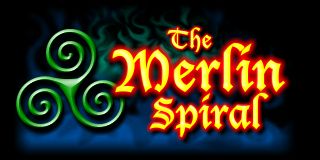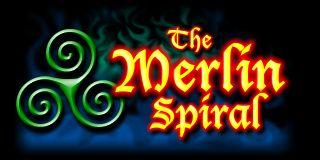How To Design A Book Series
After reading about the theory that Michael Ward has carefully put together (regarding how C.S. Lewis planned out his Chronicles of Narnia), I began to think about how my series of books has been designed.

So what are the different ways a book series can be put together so that a theme emerges and the whole becomes greater than the individual books?
That is the question of this post, and I will explore Michael Ward’s theory again, touch on L.B. Graham’s series design a bit, share the themes for my own books, as well as share ideas about other ways to do it—so keep reading!
Michael Ward’s idea is that C.S. Lewis used the Middle Age’s cosmology of the seven heavenly bodies—one for each book. Back in the Middle Ages, they only knew of five planets (besides earth), and so add to that the Sun and the Moon, and you get seven.
And at least at face value it makes sense. C.S. Lewis was a man of incredible intelligence, and the smear that he just threw together the Chronicles of Narnia hodge-podge with whatever came in his head strikes me as wrong.
I certainly know when planning my own series of books that I have not approached the issue of the theme for my series lightly. Not that I have used something as unifying as one heavenly body per book, but I certainly have worked through my series.
However, I at least have a basic framework to start with. Writing about King Arthur, there are just certain things that I dare not skip, such as the sword in the stone, the Holy Grail. Imagery such as these provide a powerful guide.
Other authors starting with a blank slate have a more difficult time, and must invent almost everything from scratch. As I said in my last post, L.B. Graham did something similar to Michael Ward’s theory by having his Binding Of The Blade series of books where each book represents one of the points of the compass with all of their archetypal associations.
For me, I am basing my books on the character traits that are forged in the crucibles that naturally come from the King Arthur myths. Here is how—as currently planned—my book series pans out:
The Merlin Spiral
| Book 1: | Merlin’s Blade | Freedom over Temptation |
| Book 2: | Merlin’s Shadow | Preciousness of Life over Selfishness |
| Book 3: | Merlin’s Nightmare | Courage over Fear |
The Pendragon Spiral
| Book 1: | Arthur’s Blade | Humbleness over Pride |
| Book 2: | Pendragon’s Blood | Mercy over Judgment |
| Book 3: | Morgana’s Hour | Sanctification & Forgiveness over Sin |
However, I originally thought I’d have to skip book two of the Merlin Spiral, but I decided to split the series into two, and that made two trilogies, allowing a publisher to contract one at a time if they wish.
Book two, though having less to do with typical Arthurian myths, deals with other legends that I am weaving into the story. It does fit in, though, and helps setup the last book by showing how Morgana came to be, the legendary King Lot, the father of Medraut/Modred who kills Arthur at the bitter end of the last book.
The “independence” of each book is an issue with any series, as a publisher might not want to keep book 1 in print the entire length of the series, and a reader might be loathe to jump into a series, say, on book 2 or book 3, if they thought they had missed anything important. With Print-On-Demand technology, this is becoming less and less of an issue, but still remains for the larger publishers who use more traditional book printing methods.
So, what are the different ways to thematically design a book series? Here are a few that I have thought of:
- Archetypes (one book per ???)
- Challenge (one book per obstacle)
- Character Trait (one book per trait, good or bad)
- Chronological (one book per phase of someone’s life)
- Chronological (one book per generation in a family)
- Chronological (one book per outside event)
- Emotions (one book per emotion)
- Location (one book per place)
- Mystery (one book per unanswered question)
- Object (one book per “thing”)
- Person (one book per character)
- Quest (one book per quest, or phases of a larger quest)
And there are probably many more ways to do this. It is also possible to combine these together—for instance, my series really combines the different events in the life of King Arthur to character traits. Some probably should be combined with another, such as Person. In that case, you would probably want some other unifying theme to show how the people are connected.
What are your ideas? Please share these in the comments.
